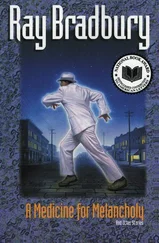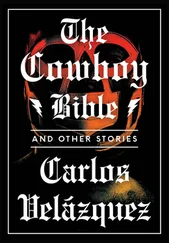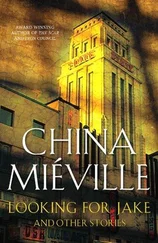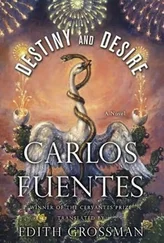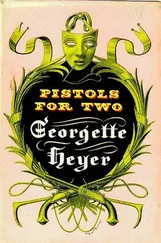No, certainly not: he could not allow what she told him, before, can’t you see, the witch showed him to me in that magic portrait, and now here he is, throbbing and pale, throbbing and impaled, and you, headless, you dirty old fool! No, certainly not, repeated the old man with the high silk hat and the crooked mouth, surrounded by women as dark and tremulous as the afternoon, as death.
Between being gored and dying, the torero raised his eyes to the sky, and, as the plaza of Ronda is not very high, he felt that he was in the middle of a field, or a mountain, or the very sky that the bloody eyes of Rubén Oliva were contemplating. The plaza of Ronda is part of the nature that surrounds it, and, who knows, perhaps that is why Rubén Oliva, that Sunday, fixed his eyes on an audience of flowers and birds and trees, everything he knew and loved in childhood, and throughout his life, seeing the arches of the plaza covered with jasmine and four-o’clocks, and decking the spandrels with blackthorn, basil, and verbena, and spewing impatiens and balm gentle over the rosettes of the cornice, twin streams flowing over the roof tiles, where cranes nest and robins flutter. He heard the mocking voice of the kite, directing his attention to the sky where it was tracing its graceful curves. Rubén Oliva, through the blood of his eyelids, looked for one final time at the sun and the moon, and at last he saw that the light of the most recent, the nighttime star reached him forty years late, while the light of the sun that he was seeing now for the last time was only eight minutes old.
Rubén Oliva looked into space and knew, finally, that he had spent his whole life watching the passage of time.
And then he felt that nature had abandoned the land forever.
First he closed his own eyes to die for the first time.
Then he closed the eyes of the bullfighter Pedro Romero, who had just died, gored, at forty, as he was retiring from the bullring in the Royal Display Grounds of Ronda, beside Rubén, inside Rubén.
He no longer heard the voice that said: My land, Ronda, the most beautiful because it opens the white wings of death and makes us see it as our inseparable companion in the mirror of the abyss.
He no longer heard the actress’s cry of terror, or the nursing boy’s wail, or the cackle of the old painter in his silk hat.
2
Rocío, the wife of Rubén Oliva, put aside her kitchen affairs for a moment, and out of the corner of her eye she saw the black bull of Osborne brandy on the television screen, and, attracted by the young group in the street singing that childish round about Sunday seven, she looked out from the balcony and said with amazed delight, Rubén, Rubén, come and look, the sea has come to Madrid.
Ronda
July 31, 1988
There are three partners at every birth: the father, the mother, and God.
Talmud
I. CONSTRUCTIONS
1
Again last night the glow appeared.
2
We invited our old teacher, the architect Santiago Ferguson, to join us for lunch at the Lincoln Restaurant. It was a long-standing custom: we’d gone there regularly, every month or so, since 1970. Eighteen years later, our teacher sitting there between us, we felt both sorrow and relief: he was getting old, but he had kept his vigor and, perhaps more important, his manias.
One of them was eating in this restaurant, which was always very busy but still managed to seem a secret. One of the best restaurants in the city, it’s called the Lincoln only because it’s annexed to the hotel of that name. The Great Emancipator never saw anything like the food it serves: brain quesadillas, basted red snapper, the best marrow soup in the world …
The restaurant is divided into several long, narrow sections, with the staff lined up on either side. The waiters look as if they’ve been there since 1940, at least. They greet our teacher by name, and he responds in kind. We’re like a family, and we’d prefer to go on being one even when our teacher is gone.
When we mention that possibility — the teacher’s death — our thoughts immediately turn to his daughter, Catarina, the girl of our twenty-year-old dreams. She was older than we were; we met her through her father, and we were desperately in love with her. Catarina, of course, never even gave us a glance. She treated us like a couple of kids. Her father was aware of our youthful passion and may even have encouraged it. He was a widower and proud of his stately daughter; she was quite tall and she held herself very straight; she had the longest neck seen outside a Modigliani painting, dark eyes, and an uncommon style — she wore her hair pulled back in a bun. You had to be as attractive as Catarina to dare defy fashion and wear a hairstyle associated, and with good reason, with do-gooders, old maids, nuns, schoolmarms, and such.
— So you’re both in love with the Salvation Army gal! said a waggish fellow student in a University City classroom, but he didn’t say any more because we knocked him out with a classic one-two punch. From then on, everyone knew that Professor Ferguson’s daughter had two gallant, though unrequited, admirers: us, the Vélez brothers, José María and Carlos María.
Our teacher knew it as well; Catarina never gave us any encouragement. We were never sure if the professor himself had arranged the one thing we got out of it. What happened was that one afternoon he scheduled an appointment with us in his office in Colonia Roma. We went up to the third floor, knocked, the door was open, the secretary was out and so was our teacher, so we ventured into the architect’s elegant office, an Art Nouveau whimsy — serpentine woodwork, stained-glass windows, and lamps like drops of molten bronze — complete with kitchen, toilet, and bath. We saw smoke pouring out of the bathroom, we were alarmed, but when we got a little closer we calmed down, seeing that it was steam, the hot water in the shower turned on full blast.
It was easy to make out white tiles decorated with a floral pattern and a white bathtub with inlaid porcelain frogs. It was harder to distinguish the clothes hanging over the shower pole, and even harder to see the naked body of Catarina, unaware of our presence, facing us, her eyes closed, holding a man with his back toward us, the two of them naked, making love amid the clouds of steam and the Art Nouveau frogs, in the bathroom of her father the architect.
Catarina, her eyes closed, her legs wrapped around her lover’s waist, had her arms clasped behind the head of a man who held her suspended in the air.
We said we would never know if that was to be our reward: a single glimpse of Catarina, naked, making love. Two months later, our teacher told us that Catarina was getting married to Joaquín Mercado, a thirty-five-year-old politician, for whom we immediately conceived a blind hatred.
3
The approach to the Lincoln had become an obstacle course, thanks to the never-ending construction on Revillagigedo, Luis Moya, Marroquí, and Artículo 123, the streets around it. The Federal Attorney’s Office, the site of the old Naval Ministry, several popular movie houses, and a real jungle of businesses, garages, hardware stores, and used-car lots made that part of the city look like a metallic mountain range: twisted, tortured, rough, rusty; several stages in the life of steel were exposed there, like the entrails of an iron-age animal — literal, emblematic — they were bursting out, exposing themselves and revealing their age, the age of the beast, the geology of the city. The deterioration of the iron and concrete amazed us: only a short time ago they were the very latest and most modern. Today, Bauhaus sounds like a cry or a sneeze.
Читать дальше

